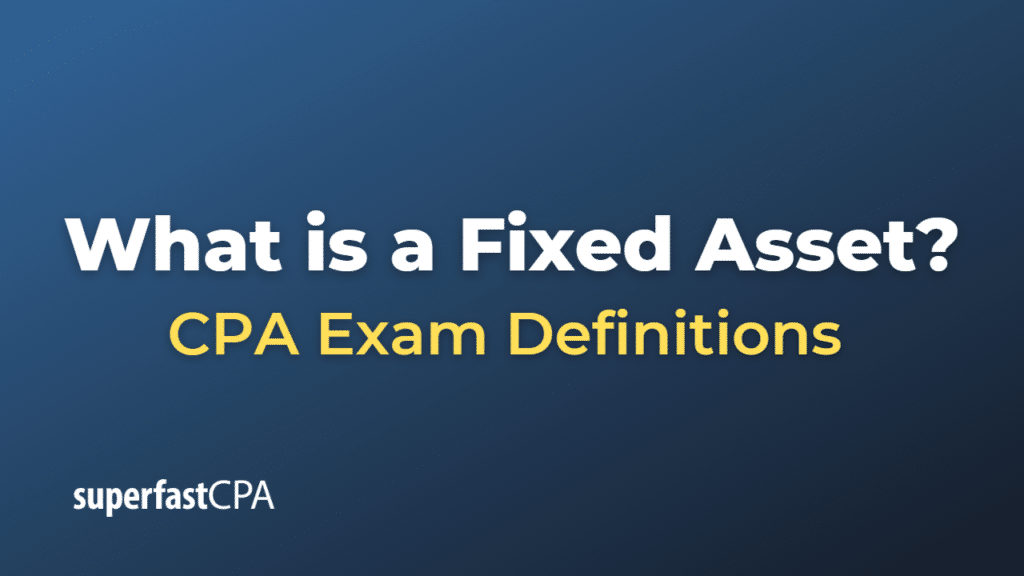Fixed Asset
A fixed asset, also known as a non-current asset or a long-term asset, is a term used in accounting for assets and property that cannot easily be converted into cash and which a company intends to use for more than one accounting period, typically a year. Fixed assets are used in the production of goods and services, for rental to others, or for administrative purposes. They are not intended for sale in the regular course of business.
Fixed assets can include items like:
- Property, Plant, and Equipment (PP&E): This includes land, buildings, machinery, vehicles, and office equipment. These assets are typically the largest class of fixed assets.
- Intangible Assets: These are non-physical assets, like patents, copyrights, trademarks, licenses, and goodwill. These assets provide the company with long-term rights or advantages.
- Investments: This could include long-term investments in securities (stocks, bonds), or in subsidiary or associated companies.
Fixed assets are capitalized and depreciated over their useful lives, except for land which is not depreciated. Depreciation is the allocation of the cost of a fixed asset over the period it is used, and it is recognized as an expense in the company’s income statement over that period.
The valuation of fixed assets is typically shown on the balance sheet, and it reflects the cost of the assets minus accumulated depreciation. The rules for accounting for fixed assets can vary, but in general, companies must follow established accounting standards when calculating and reporting the value of fixed assets on their financial statements.
Example of a Fixed Asset
Let’s take a hypothetical example of a manufacturing company, “ManufactCo,” to illustrate fixed assets.
Property, Plant, and Equipment (PP&E):
- Land: ManufactCo owns a piece of land where its manufacturing plant is located. This land is a fixed asset.
- Buildings: The manufacturing plant itself, along with any warehouses, offices, or other buildings owned by ManufactCo, are fixed assets.
- Machinery and Equipment: The machines used to manufacture products, as well as any office equipment or vehicles owned by ManufactCo, are also considered fixed assets.
Intangible Assets:
- Patents: If ManufactCo has invented and patented new manufacturing processes, these patents are intangible fixed assets.
- Trademarks: If ManufactCo has registered trademarks, these are also considered intangible fixed assets.
Investments:
- Long-term Investments : If ManufactCo has purchased stocks or bonds as a long-term investment, or if it owns a majority stake in another company, these investments are also considered fixed assets.
These fixed assets will be recorded on ManufactCo’s balance sheet at their cost when acquired. Over time, most of these assets (except for land and certain intangibles) will be depreciated, meaning their cost will be systematically allocated over their useful lives as an expense on the income statement.
For example, if ManufactCo purchased a machine for $100,000, and it has a useful life of 10 years, the company will record $10,000 ($100,000 divided by 10 years) as depreciation expense on the income statement each year, reducing the carrying value of the machine on the balance sheet by the same amount annually.













